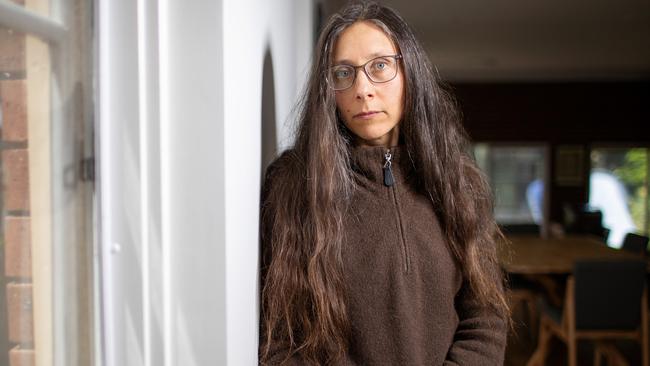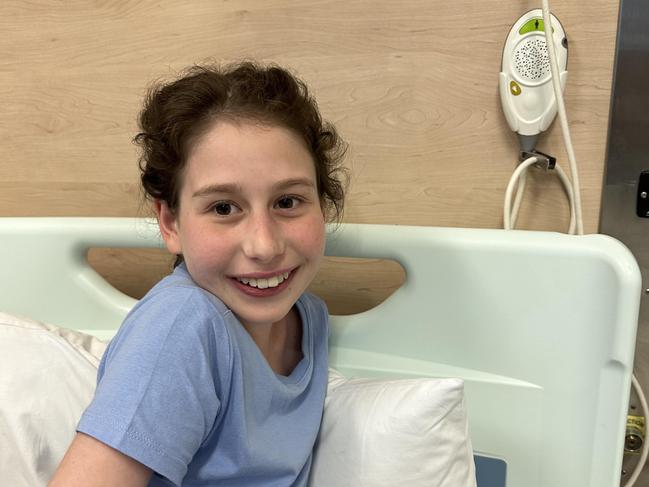Paediatrician ‘never seen anything like’ the rise in eating disorders among youth in Melbourne
Monash Children’s Hospital has been “absolutely overwhelmed” with a spike in children and teens with eating disorders.
Victoria
Don't miss out on the headlines from Victoria. Followed categories will be added to My News.
The number of children and teenagers turning up to hospital with eating disorders has skyrocketed since Covid lockdowns in Melbourne, with children only able to get admitted once they are near death.
In a phenomenon “never seen before” by a top paediatrician with 28 years of experience, Monash Children’s Hospital’s eating disorder ward has experienced an 85 per cent increase in demand in two years.
Jacinta Coleman, head of adolescent medicine at Monash, said it was a similar situation across the three other teenage eating disorder clinics in Victoria and those diagnosed were getting younger.
“I have never, in my life, seen anything like it, we were just absolutely overwhelmed with the number of young people coming through,” Dr Coleman said.
Amid growing fears about the negative influence of social media on eating disorders, Goldstein MP Zoe Daniel will on Wednesday call for a “circuit-breaker” to stop the revolving door of hospital admissions from a growing number of teens and kids turning up to emergency departments.
Ms Daniel will call on the federal and Victorian governments to open a one-stop eating disorder hub for children, adolescents, and young adults where all clinicians are located.
“Eating disorder specialists told us this … would save lives, improve recovery rates, reduce re-hospitalisation, and take the strain off the public hospital system,” she will say in a speech to parliament.

In one illustration of how bad things have become, Caulfield south mother Deanna Cohen said her 11-year-old daughter had to be close to dying to get treatment at Monash’s eight-bed specialist adolescent medical unit.
This is because it only helps acute patients with physical complications and no extra staff have been employed to deal with the increase in demand.
Ms Cohen said her daughter Esther was diagnosed with anorexia eight months ago but her condition had worsened after attending the ward because she was merged in with older teenagers who had complex issues.
“We’ve had to have Esther under police guard, we’ve had to do the most extreme things to actually get into the emergency department, we had her runaway, we had police searches for her when we’ve been trying to take her because that’s how difficult it is,” she said.
Once inside Monash, Esther has to be force fed by a tube if she doesn’t consume her meal before a timer rings.
“It’s very traumatic for the child, it’s very traumatic for the families,” Dr Cohen said.
Bayside mother Jo Smith, said she drove her 15-year-old daughter, who was diagnosed with anorexia a year ago, to Monash when her heart started to fail her.

She said that after going to a GP – who made the mistake of weighing her daughter – the family wasted three weeks contacting psychologists across Melbourne only to be told there were six month waitlists.
After finally securing an appointment with the Alfred Child & Youth Mental Health Service, it was cancelled due to a more urgent case.
When Ms Smith drove her daughter to Monash: “She was admitted immediately with the lowest BMI they had seen in five years, her heart was failing her”.
The number of eating disorder-related emergency department presentations in Victoria rose to 23 in September, more than double the amount two years ago.
Figures from the Victorian Agency for Health Information show presentations soared as high as 35.3 a week in the first year of the pandemic.
Ms Daniel said in Melbourne’s southeast experts estimate the prevalence of eating disorders is almost one in nine adolescents.
“Some even estimate that in my Bayside electorate it could be as high as one in seven and heading towards one in five depending on their individual cohorts,” she said.
“Many adolescents are competing with one another on social platforms like TikTok on who can consume the least amount of calories within a day or week.
“We must do something.”
Ms Daniel said the state needed an eating disorder hub with a three-week residential program to treat the mental and physical aspects of the disorder.
She said an at-home eating disorder support team should also be available to assist with refeeding, and there would be resources for parents and school visits.
Dr Coleman said Monash was developing a new model of care, hoped would begin in April next year, which would take a multidisciplinary approach to treating eating disorders to prevent hospital admissions.
“We really need an injection of funds for mental health support for people with eating disorders because it‘s a very specialised field,” Dr Coleman said.
Eating Disorders Victoria estimates that more than 334,000 people across the state have an eating disorder.
The social and economic cost of eating disorders is expected to total a whopping $80bn this year alone, according to the Butterfly Foundation.
Anorexia is one of several eating disorders, which have the highest mortality rate of all psychiatric disorders.
Nationally, 47 per of people diagnosed have a binge eating disorder, 12 per cent have bulimia nervosa and 3 per cent have anorexia nervosa.
‘We’re treated like criminals’
Isobel Atkins was diagnosed with anorexia four years ago and said school life and social media played a big role.
In one concerning trend, the 17-year-old said it had become the norm among students at her Sandringham school not to eat lunch.
“A lot of girls don’t bring lunch to school, so you think it’s unusual to be eating lunch,” she said.

TikTok, meanwhile, features plenty of negative content about body image.
“There’s a lot of things I see on social media where if I wasn’t getting help, I would be sort of drawn into it,” she said.
Since April 2020, Isobel has been in hospital seven times.
She said every return visit felt like a “walk of shame” was “traumatising”.
“We’re treated like criminals,” she said.
“It’s only getting worse, so obviously what is being done right now isn’t working. Something needs to change.
“People with eating disorders want to get better.”
Isobel now receives support from a dietitian, paediatrician, psychologist and a GP and said mentally, she was feeling “a lot better”.
But she also raised concerns about the affordability of care saying it was a “battle of the richest”.
“I’ve been to a private clinic which costs $33,000 if you don’t have private health insurance,” Isobel said.
“If you can’t pay for a private system you have to wait a long time, and people can die before that.”
Like many teenagers battling eating disorders, her mental state deteriorated during Covid lockdowns.
“When Covid hit I just went into a really anxious and depressed state,” she said.
“Being sporty, I thought that being healthy was only going to make me a better athlete. Now I can’t play sport at all.”
Originally published as Paediatrician ‘never seen anything like’ the rise in eating disorders among youth in Melbourne





